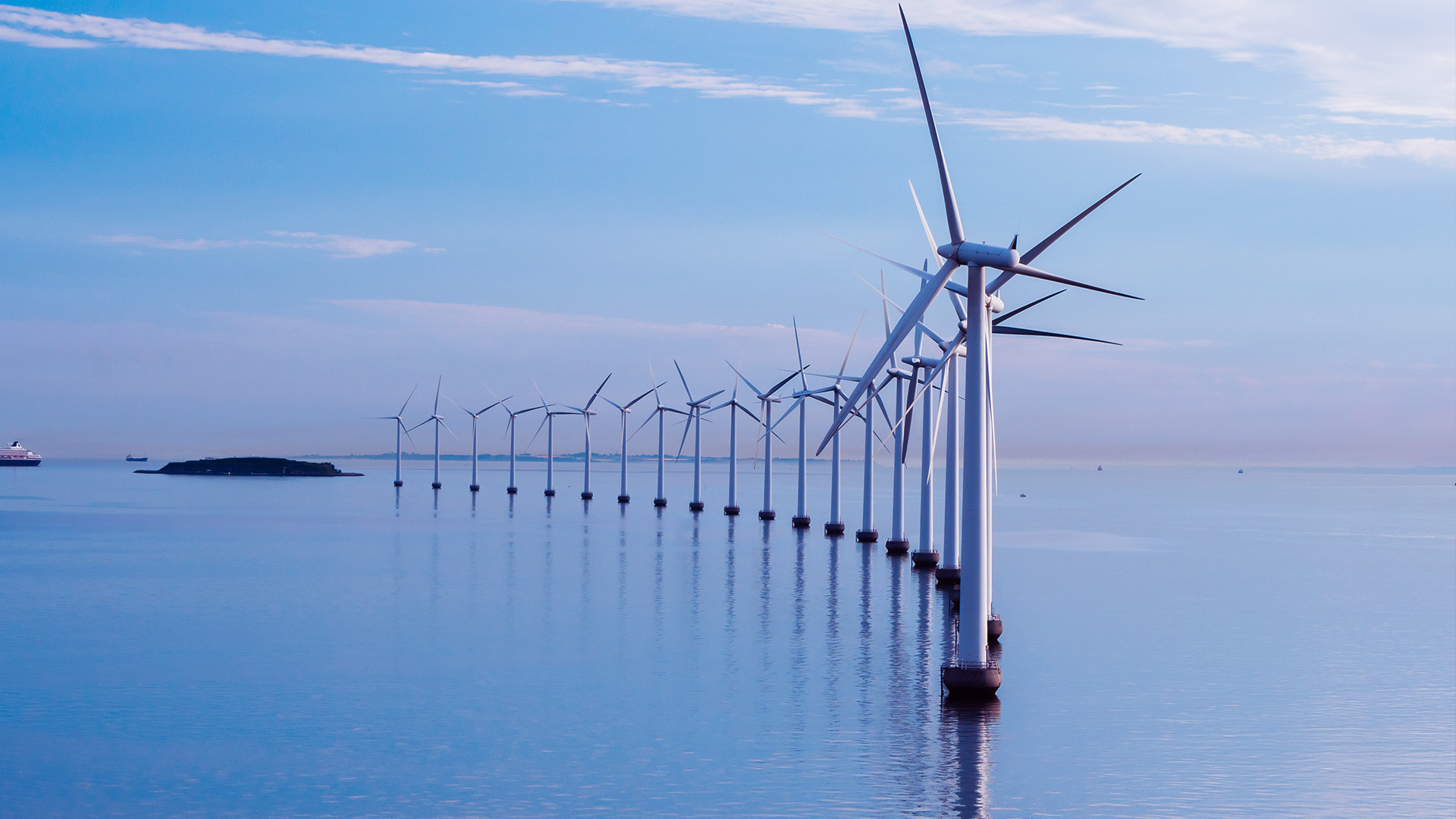The Economic Viability Of Offshore Wind Farms: A Critical Analysis

Table of Contents
Economic viability, in the context of offshore wind farms, refers to the project's ability to generate sufficient revenue to cover all costs – including capital expenditure, operational expenses, and environmental mitigation – while delivering an acceptable rate of return on investment. This analysis will delve into capital costs and financing, operational expenses, revenue streams, environmental considerations, and comparisons with other renewable energy sources to assess the overall economic feasibility of offshore wind power.
Capital Costs and Financing of Offshore Wind Farms
High Upfront Investment
Offshore wind farm development requires a substantial initial capital expenditure. The high upfront investment is a significant barrier to entry for many potential developers. This includes:
- Turbine costs: The cost of purchasing and installing wind turbines, which represent a major portion of the total capital expenditure.
- Foundation costs: Constructing robust foundations to withstand harsh marine conditions, varying significantly depending on water depth and soil type.
- Subsea cable costs: Laying and connecting extensive subsea cables to transmit electricity to the onshore grid, a complex and expensive undertaking.
- Vessel and installation costs: Specialized vessels are required for transportation, installation, and maintenance, contributing to high operational costs.
Securing financing for such massive projects is challenging. Funding typically involves a mix of:
- Equity financing: Investment from private companies or government agencies.
- Debt financing: Loans from banks and financial institutions.
- Government subsidies and tax incentives: Crucial in many jurisdictions to reduce risk and make projects financially attractive.
Innovative financing models, such as crowdfunding and green bonds, are emerging to improve the financial viability of offshore wind energy projects.
Technological Advancements Reducing Costs
Technological advancements are playing a crucial role in driving down the cost of offshore wind energy. This includes:
- Larger turbine designs: Larger turbines generate more electricity, leading to economies of scale and lower costs per kilowatt-hour.
- Floating platform technology: Enables the construction of offshore wind farms in deeper waters, unlocking vast untapped resources.
- Improved installation techniques: More efficient installation methods reduce labor costs and project timelines.
- Advanced manufacturing processes: Streamlined manufacturing techniques and the use of composite materials are reducing the cost of individual components.
These advancements are leading to significant reductions in the Levelized Cost of Energy (LCOE), making offshore wind increasingly competitive with traditional energy sources.
Operational Costs and Maintenance of Offshore Wind Farms
Ongoing Maintenance and Repair Expenses
Maintaining and repairing offshore wind turbines is inherently expensive and challenging:
- Specialized vessels: Specialized vessels are required for access to the turbines, adding to operational costs.
- Skilled labor: Highly trained technicians and engineers are needed for repairs and maintenance, increasing labor costs.
- Weather-related delays: Adverse weather conditions can significantly impact maintenance schedules and increase costs.
- Remote location challenges: The remote location of offshore wind farms increases the logistical complexity and cost of maintenance.
These operational and maintenance (O&M) costs represent a significant portion of the overall project cost and can significantly influence the economic viability of offshore wind energy projects.
Minimizing O&M through Technological Innovation
Technological advancements are being implemented to minimize O&M costs and improve the efficiency of offshore wind farms:
- Predictive maintenance: Using sensors and data analytics to predict potential failures and schedule maintenance proactively, reducing downtime.
- Remote diagnostics: Remote monitoring and diagnostics allow for early detection of issues, minimizing the need for costly on-site visits.
- Automation: Automation of routine maintenance tasks can improve efficiency and reduce labor costs.
- AI and machine learning: AI and machine learning algorithms can optimize maintenance schedules and improve the overall performance of offshore wind farms.
Revenue Streams and Market Dynamics for Offshore Wind Energy
Power Purchase Agreements (PPAs) and their Influence
Power Purchase Agreements (PPAs) are critical in securing long-term revenue streams for offshore wind farm projects.
- Fixed-price PPAs: Provide a fixed price per kilowatt-hour of electricity over the contract period, offering price certainty but exposing the developer to market price fluctuations.
- Indexed PPAs: Adjust the price based on a specific index, offering some protection against market volatility.
However, market risks, such as changes in electricity demand and competition from other renewable energy sources, can impact the long-term viability of PPAs.
Government Policies and Subsidies
Government policies play a vital role in shaping the economic landscape for offshore wind energy.
- Feed-in tariffs: Guaranteed prices for renewable energy, providing price certainty and encouraging investment.
- Tax credits and incentives: Reducing the tax burden on developers, improving project profitability.
- Renewable portfolio standards (RPS): Mandating a certain percentage of electricity generation from renewable sources, stimulating demand for offshore wind energy.
Changes in government policies and the level of support can significantly impact investment decisions and the overall economic viability of offshore wind farm projects.
Carbon Pricing and Emission Reduction Targets
Increasingly stringent emission reduction targets and carbon pricing mechanisms are creating favorable conditions for offshore wind energy.
- Carbon pricing: Putting a price on carbon emissions makes renewable energy sources like offshore wind more competitive compared to fossil fuels.
- Carbon markets: Allowing companies to buy and sell carbon credits, creating additional revenue streams for offshore wind projects.
These mechanisms incentivize investment in clean energy and can significantly enhance the economic viability of offshore wind farms.
Environmental Considerations and their Economic Impacts
Environmental Impact Assessments and Mitigation Costs
Environmental impact assessments (EIAs) are crucial in determining the environmental effects of offshore wind farm development and the subsequent mitigation costs.
- Marine life impact: Potential impacts on marine mammals, fish, and birds require mitigation measures like specific turbine designs and operational protocols.
- Habitat disturbance: Construction activities can disturb seabed habitats, requiring mitigation strategies.
- Noise pollution: Noise generated during construction and operation can impact marine life, necessitating noise reduction measures.
These mitigation measures increase project costs, which must be factored into the overall economic assessment.
Public Acceptance and Social License to Operate
Public acceptance and a social license to operate are vital for the success of offshore wind farm projects.
- Community engagement: Engaging with local communities to address their concerns and build support is essential for securing permits and minimizing project delays.
- Stakeholder consultation: Consulting with all relevant stakeholders can help resolve potential conflicts and avoid costly delays.
Lack of public support can lead to project delays, litigation, and increased costs, significantly impacting the economic viability of offshore wind farm projects.
Comparison with Other Renewable Energy Sources
Cost-Benefit Analysis Against Onshore Wind, Solar, and Other Alternatives
A cost-benefit analysis comparing offshore wind with other renewable energy sources is crucial for determining its competitiveness.
- Levelized Cost of Energy (LCOE): Comparing the LCOE of offshore wind with onshore wind, solar PV, and other alternatives provides a benchmark for assessing cost-competitiveness.
- Advantages and disadvantages: Analyzing the advantages and disadvantages of each technology, such as geographical limitations, resource availability, and environmental impacts.
Conclusion: The Future of Offshore Wind Farm Economics
The economic viability of offshore wind farms is influenced by several interconnected factors. High upfront capital costs, ongoing operational and maintenance expenses, and environmental considerations all pose significant challenges. However, technological advancements, supportive government policies, and the increasing urgency of climate change mitigation are creating opportunities for significant growth in the offshore wind sector. The development of innovative financing models, coupled with continuing technological progress in turbine design and installation techniques, is crucial for reducing the LCOE and making offshore wind power even more cost-effective. Furthermore, robust environmental impact assessments and meaningful stakeholder engagement are vital to securing public support and minimizing potential delays and cost overruns. Further exploration into innovative financing models, technological advancements, and supportive government policies is crucial to ensuring the long-term economic viability of offshore wind farms and accelerating the global transition to clean energy. Investing in and supporting the development of offshore wind power is essential for a sustainable energy future.

Featured Posts
-
 Max Verstappen Fatherhood And The Miami Grand Prix
May 04, 2025
Max Verstappen Fatherhood And The Miami Grand Prix
May 04, 2025 -
 Kivinin Kabugunun Besin Degeri Ve Tueketimi Hakkinda Bilgiler
May 04, 2025
Kivinin Kabugunun Besin Degeri Ve Tueketimi Hakkinda Bilgiler
May 04, 2025 -
 Louisiana Derby 2025 Odds Field Predictions And Kentucky Derby Implications
May 04, 2025
Louisiana Derby 2025 Odds Field Predictions And Kentucky Derby Implications
May 04, 2025 -
 May 3rd Ufc Fight Night Deiveson Figueiredo Vs Cory Sandhagen
May 04, 2025
May 3rd Ufc Fight Night Deiveson Figueiredo Vs Cory Sandhagen
May 04, 2025 -
 Al Haymon To Reveal Canelo Vs Crawford Promoter And Platform May 3rd Announcement
May 04, 2025
Al Haymon To Reveal Canelo Vs Crawford Promoter And Platform May 3rd Announcement
May 04, 2025
